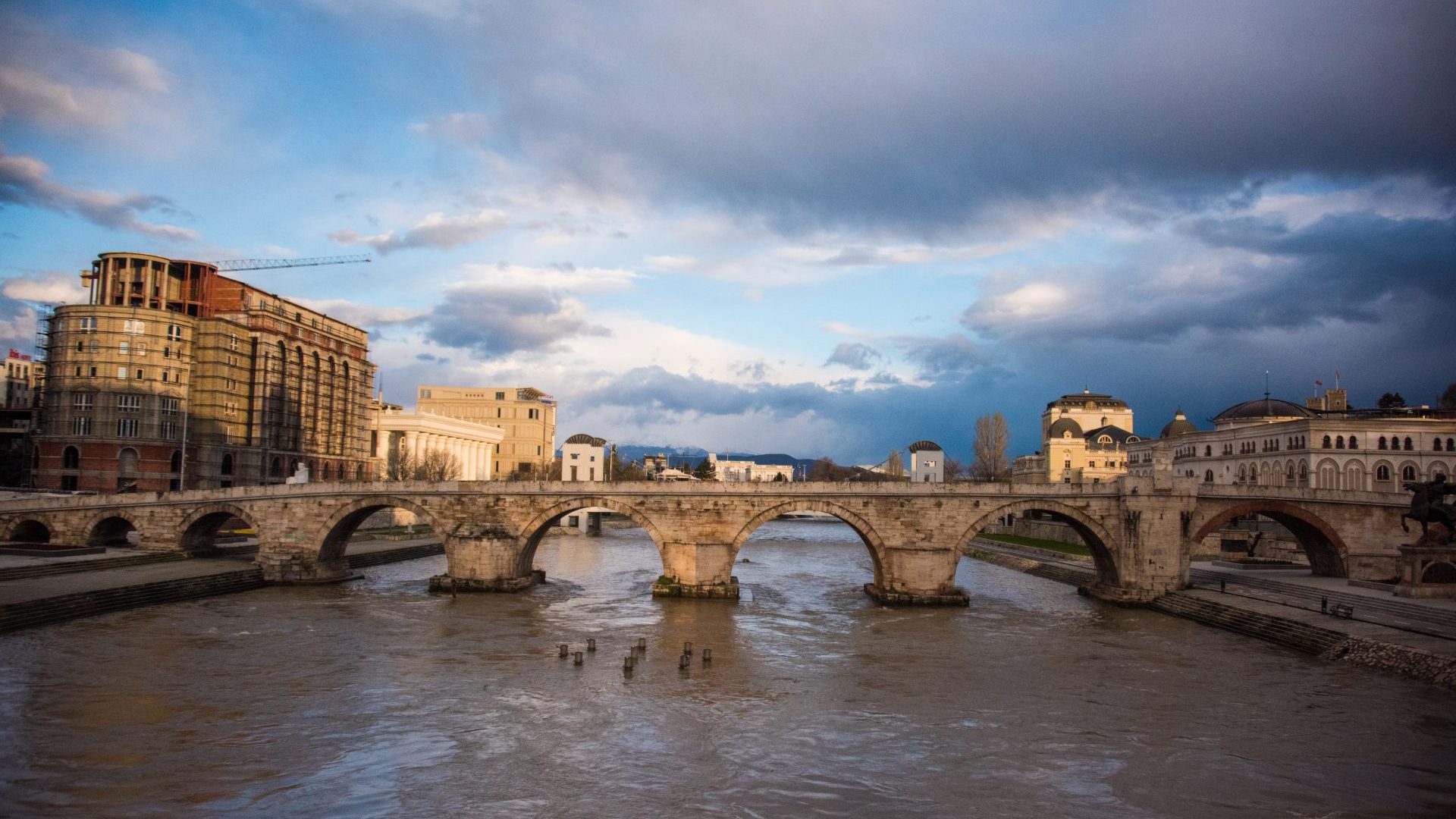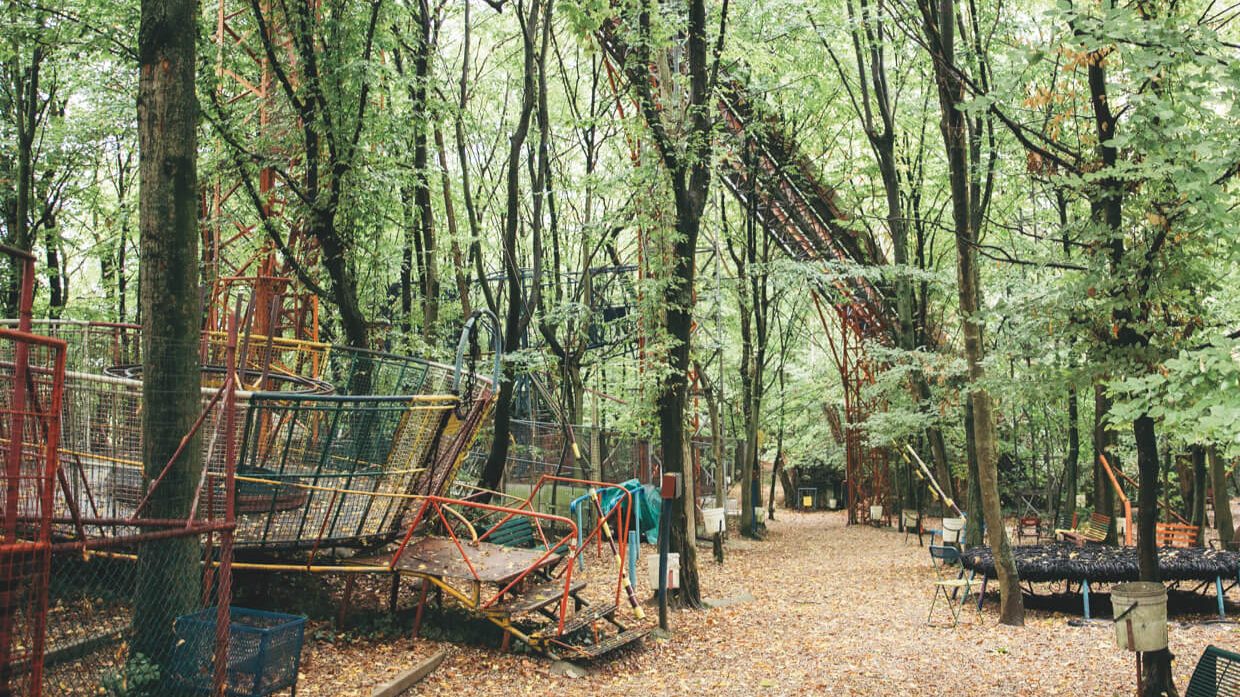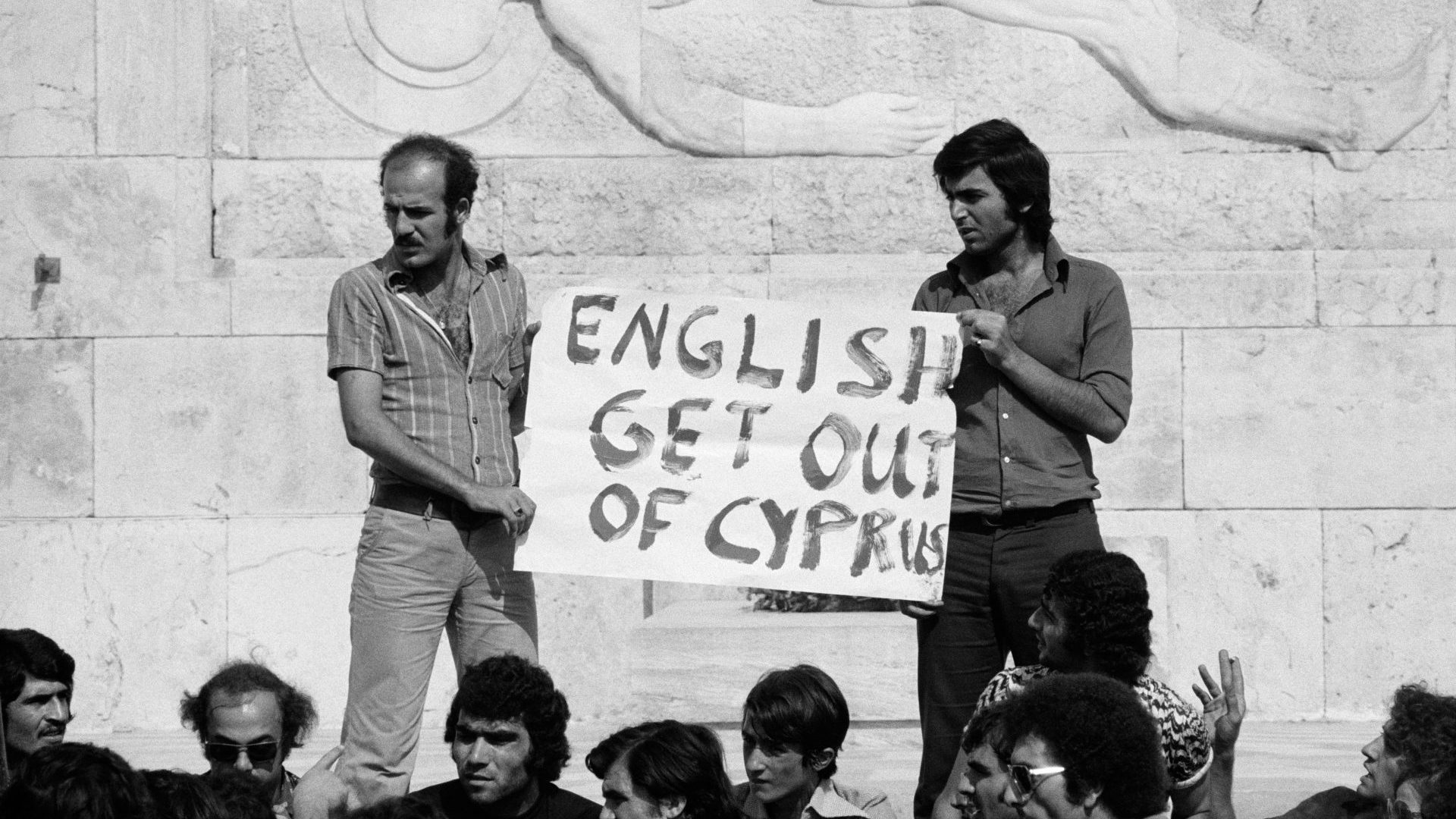The great Stone Bridge of Skopje, in North Macedonia, spans the Vardar River, connecting the old and new parts of town. Built in the 15th century, it serves as a link between two ethnic groups. South of the river, the population is predominantly Macedonian and Christian, while the north side is Albanian Muslim.
Macedonia Square is at the centre of the city. There stands the imposing statue of Alexander the Great, officially known as the “Warrior on the Horse”. There’s also a statue of the Byzantine emperor Justinian, and another of Tsar Samuil. The gap between the ancient and modern feels very narrow here.
Macedonia Street is full of cafes, bars and shops. There’s music playing everywhere, a mix of foreign and Macedonian. In 1910, Mother Teresa was born on this street. Further down, in the city park near the Toše Proeski Arena, locals sit out late into the evenings.
After crossing the 15th-century Stone Bridge to the northern side of the city, I was greeted by the giant statue of Philip II of Macedon, another native of Skopje. Up in the Old Bazaar, the traders were shouting in English, Turkish, Macedonian and Albanian.
I have visited all of the former Yugoslav states and, like them, North Macedonians of a certain age still have a good deal of respect for Tito. One bar I visited in Skopje had a large photo of the former dictator, accompanied by a couch where people could sit to have their portrait taken with him. I ended up discussing Tito with a shop owner, who was so enthused he gave me stickers of the Yugoslav flag that he kept under the counter.
The name North Macedonia was a compromise with Greece, which objected to the name “Macedonia” because it has a region of the same name. For a while the country was known as the “Former Yugoslav Republic of Macedonia”, but the inclusion of “North” resolved the dispute.
Speaking to people in Skopje about the name change, I found mixed responses. Some people thought it was all ridiculous. There was even a referendum on changing the country’s name, but it failed due to low turnout. One person wondered why the government bothered to ask their opinion if they were going to change the name anyway. When I said that the name change allowed North Macedonia to join Nato, and opened the way to EU membership, well, yes, they conceded, it had done that.
EU membership is the great prize. North Macedonia obtained candidate status 20 years ago, and since 2009, its citizens have had free travel within the Shengen area. But there are blockages. Bulgaria does not recognise the Macedonian language as distinct, considering it a dialect of Bulgarian. There are similarities between the two, but most people I spoke to see it as a political spat, not a cultural one. North Macedonians and Bulgarians generally get along fine.
The EU flag is all over Skopje. Information billboards about EU-funded projects line the streets, and the EU and national flags flutter side by side in front of various buildings and universities.
While having beer and ćevapi, a type of Balkan kebab, with Macedonians, and while having trileçe dessert and traditional Turkish tea with ethnic Albanians, I met people who were optimistic about EU membership, believing that it would bring economic growth, stability and progress. They all had their own unique perception of the EU. For some, it represented improved education, democracy and the rule of law, while others associated it with the well-organised traffic and orderly streets they had heard about from their relatives in western Europe.
I’m Turkish, so I found the mix of optimism and uncertainty over EU membership very familiar. On balance, I think the Western Balkan nations are likely to join. But there is frustration here with the slow progress towards membership. More than one person in North Macedonia told me: “I want my country to be in the EU – but I am just not sure if we can actually achieve it.”



